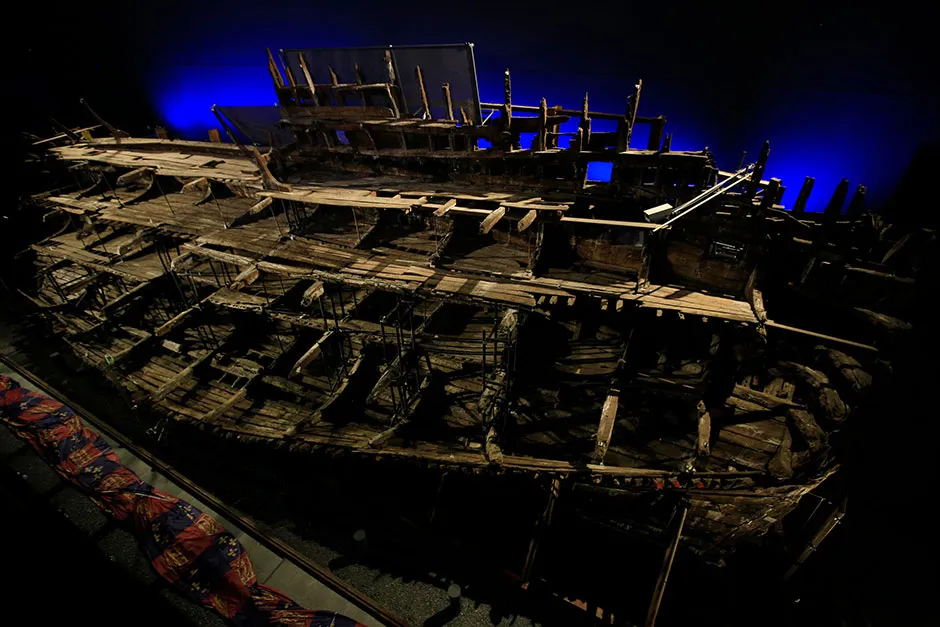King Henry VIII’s favourite ship, the Mary Rose, was made up of a multinational crew, research suggests.
It is thought as many as three of the eight crew of the Tudor warship may have originated from southern European coasts, Iberia and North Africa. Researchers say the remaining five crew members were likely to have been brought up in western Britain, with further analysis suggesting one of these men was of African ancestry.
The Mary Rose was a successful warship and served Henry VIII for 34 years. It sank during the Battle of the Solent in 1545 resulting in the deaths of the vast majority of her crew.
Scientists at Cardiff University are working with the Mary Rose Trust and the British Geological Survey to reveal the ancestry, childhood origins and diets of some of the crew who perished on the ship.
“Our findings point to the important contributions that individuals of diverse backgrounds and origins made to the English navy during this period," said first author Jessica Scorrer. “This adds to the ever-growing body of evidence for diversity in geographic origins, ancestry and lived experiences in Tudor England.”
In 1982, 437 years after she sank, the remains of the Mary Rose and 19,000 artefacts were recovered, and many are conserved and displayed in Portsmouth Historic Dockyard.
Read more about British archaeology:
- Scientists reconstruct the faces of 700-year-old skulls from Edinburgh
- Earliest example of abstract British art discovered in Jersey
Researchers used a technique called multi-isotope analysis on teeth to investigate where the eight crew members spent their early years and what their diet was like. Chemical tracers from the food and water they consumed in childhood, which provide evidence for geographical location, remain within the teeth.
“We have been able to reconstruct the biographies of eight people from the Tudor period in much more detail than is usually possible," said Dr Richard Madgwick, also from Cardiff University.“This has shown their diverse origins and provided the first direct evidence for mariners of African ancestry in the navy of Henry VIII.”

The eight crew members featured in the research have also formed the basis of a temporary exhibition – The Many Faces Of Tudor England – at the Mary Rose Museum in Portsmouth.
Dr Alexzandra Hildred, from the Mary Rose Trust, added: “The variety and number of personal artefacts recovered which were clearly not of English manufacture made us wonder whether some of the crew were foreign by birth.
“However, we never expected this diversity to be so rich. This study transforms our perceived ideas regarding the composition of the nascent English navy.”
Reader Q&A: Why do we have to dig so deep to uncover ancient ruins?
Asked by: Nikkola Furfaro, Australia
There is a survivorship bias at work here: buildings and monuments left exposed on the surface don’t last very long. Humans steal the best bits to reuse in other buildings, and erosion wears everything else to dust. So the only ancient ruins we find are the ones that were buried.
But they got buried in the first place because the ground level of ancient cities tended to steadily rise. Settlements constantly imported food and building materials for the population, but getting rid of waste and rubbish was a much lower priority. New houses were built on top of the ruins of old ones because hauling away rubble was labour intensive and it was much easier to simply spread it out and build straight on top.
Rivers periodically flooded and added a layer of silt, while in dry regions the wind was constantly blowing in sand and dust. (The Sphinx was buried up to its head in sand until archaeologists re-excavated it in 1817.)
When ancient towns were abandoned entirely, plant seeds quickly took root and created more bulk from the CO2they pulled from the air. Their roots stabilised the soil created from rotting plant matter and the layers gradually built up.
Read more: